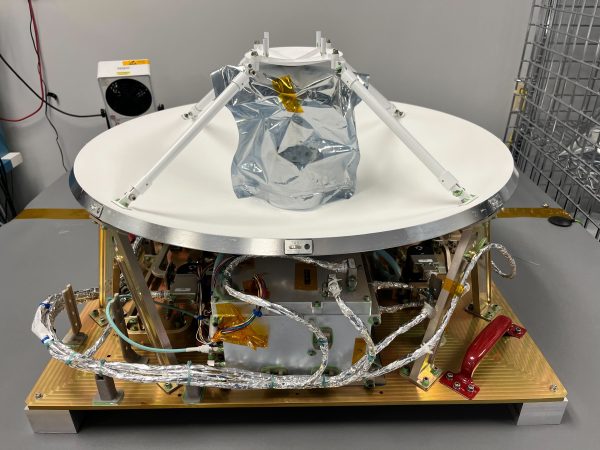Wideband Commercialization Project
Enabling interoperability between government and commercial owned networks for near-Earth services.
Wideband User Terminal Technology
NASA has identified a need to develop commercially led satellite communications services for future NASA missions. For almost 40 years, NASA has relied on its own near-Earth satellite system to provide communication links between the ground and satellites in low-Earth orbit, but NASA’s current infrastructure was not originally designed for interoperability between government and commercial networks.
NASA’s Glenn Research Center has developed wideband terminal technology, designed to provide interoperability to spacecraft, meaning they will be able to “roam” between NASA and commercial networks in space for the very first time. Wideband user terminals are transceivers that can operate over both government and commercial Ka-band spectrum allocations of 17.7 GHz – 31 GHz, covering commercial services, military operations, and civilian space operations. The interoperability function enabled by wideband technology aims to provide the ability to seamlessly connect to both government and commercial communications networks, allowing for multi-access points of services, lower latency, and lower communications costs for NASA missions as the agency transitions towards the use of commercial service providers.
Testing and Future Applications
Ground-based testing of wideband terminal functionality was successfully completed in 2021 at NASA’s Glenn Research Center. Proof-of-concept wideband terminal operations have been demonstrated with multiple space networks from both commercial and government satellite communications services. Additional demonstration activities and enhancements to the wideband terminal prototype are currently underway.
NASA has partnered with the John’s Hopkins University Applied Physics Laboratory to conduct a flight demonstration of wideband terminal technology, currently set to launch no earlier than June 2024. The Polylingual Experimental Terminal, known as PExT, has the objective of demonstrating contact and link management, as well as forward and return data flow, with interoperability between NASA’s Tracking and Data Relay Satellites and at least two commercial relay providers. PExT will be the first flight test of wideband technology.
After the six-month flight demonstration has concluded, the Wideband Commercialization Project at Glenn will continue the development and progression of wideband technology by identifying potential NASA missions as early adopters and working with them to procure wideband terminals suitable for their use.
The Wideband Terminal Project is currently providing opportunities for the mission user community to take part in extended operation experiments using wideband technology. Please contact project lead marie.t.piasecki@nasa.gov for more information.
Learn more about wideband technology and the upcoming PExT flight demo: Wideband Technology – NASA

Credit: Johns Hopkins University Applied Physics Laboratory
